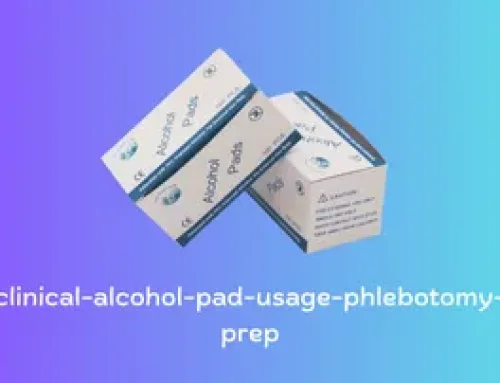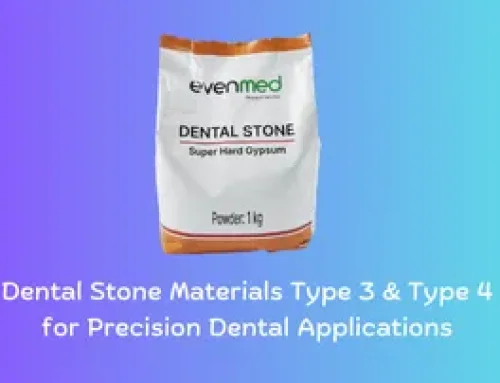Il est essentiel de comprendre la raison du coût des matériaux d'impression en silicone, en particulier dans l'industrie dentaire. Les dentistes et les professionnels de l'art dentaire se demandent souvent pourquoi ces matériaux semblent se situer à l'extrémité supérieure du spectre des prix. Dans cet article détaillé, nous nous penchons sur les différents facteurs contribuant à ce coût apparemment élevé, dans le but d'apporter des éclaircissements aux praticiens et aux esprits curieux.
Le processus de production complexe
Les matériaux d'empreinte en silicone font l'objet d'un processus de fabrication méticuleux qui influe considérablement sur leur prix final. La nature complexe de la fabrication de ces matériaux implique de la précision, un équipement spécialisé et des mesures de contrôle de la qualité. Chaque étape contribue au coût global, tout en garantissant que le produit final répond aux normes rigoureuses exigées dans le domaine dentaire.
![]()
Intégration de technologies de pointe
Dans le domaine des empreintes dentaires, il est impératif de rester à la pointe de la technologie. Les progrès de pointe dans la formulation des silicones et les technologies de production contribuent à la dépense globale. L'utilisation de méthodes innovantes garantit la précision et la fiabilité des matériaux, conformément aux normes en constante évolution de l'industrie.
Normes d'assurance qualité
Le maintien de normes de haute qualité n'est pas négociable dans la profession dentaire. Les matériaux d'empreinte en silicone doivent répondre à des réglementations strictes pour garantir l'efficacité, la sécurité des patients et des résultats optimaux. Des tests rigoureux, le respect des exigences réglementaires et des processus continus d'assurance qualité augmentent le coût global mais sont essentiels pour fournir des solutions dentaires fiables.
Pureté des matériaux et biocompatibilité
Les matériaux d'empreinte en silicone sont en contact direct avec les tissus buccaux des patients, ce qui exige un niveau de pureté et de biocompatibilité inégalé. L'approvisionnement et l'incorporation de matériaux de qualité supérieure, à la fois sûrs et efficaces, augmentent les coûts. L'engagement en faveur de la biocompatibilité garantit le bien-être du patient et distingue ces matériaux en termes de qualité.
Demandes du marché et dynamique de la chaîne d'approvisionnement
Il est essentiel de comprendre la dynamique de l'offre et de la demande sur le marché dentaire. Les fluctuations des coûts des matières premières, les conditions économiques mondiales et les tendances du marché jouent un rôle essentiel dans la détermination du prix final des matériaux de prise d'empreinte en silicone.
Échelle de production limitée
La nature spécialisée de la production de matériaux d'empreinte en silicone se traduit souvent par une fabrication à échelle limitée. Ce marché de niche contribue à augmenter les coûts de production par unité, ce qui, à son tour, a un impact sur la stratégie globale de fixation des prix. La disponibilité limitée et les exigences uniques du secteur dentaire soulignent encore plus l'exclusivité de ces matériaux.
Considérations environnementales et éthiques
Les consommateurs modernes, y compris les praticiens dentaires, privilégient de plus en plus les produits respectueux de l'environnement et d'origine éthique. Les fabricants qui investissent dans les pratiques durables et l'approvisionnement éthique peuvent voir leurs coûts de production augmenter, ce qui se répercute ensuite sur le prix des matériaux d'empreinte en silicone.
Initiatives en matière d'emballage durable
Alors que le monde gravite autour des pratiques écologiques, les fabricants qui intègrent des solutions d'emballage durables peuvent encourir des dépenses supplémentaires. Bien que cela s'inscrive dans le cadre des objectifs globaux de développement durable, cela ajoute à la structure globale des coûts des matériaux d'impression en silicone.
Pourquoi les matériaux d'empreinte en silicone coûtent-ils si cher ?
Maintenant que nous avons exploré les subtilités de la production, de l'assurance qualité, de la dynamique du marché et des considérations éthiques, il devient évident que le coût des matériaux d'empreinte en silicone est le résultat de plusieurs facteurs. De la technologie de pointe aux normes de qualité rigoureuses, chaque aspect contribue à la valeur que ces matériaux apportent à la profession dentaire.
FAQ
Q : Existe-t-il des alternatives abordables aux matériaux d'empreinte en silicone ? R : Bien qu'il existe des alternatives, le silicone reste l'étalon-or des empreintes dentaires en raison de sa précision et de sa biocompatibilité. Choisir la qualité plutôt que le coût permet d'obtenir des résultats optimaux pour le patient.
Q : Le coût élevé peut-il être justifié pour les petits cabinets dentaires ? R : Oui, l'investissement dans des matériaux d'empreinte en silicone de haute qualité est crucial pour les petits cabinets. La satisfaction des patients, la précision et la rentabilité à long terme l'emportent sur l'investissement initial.
Q : Les progrès technologiques entraînent-ils des hausses de prix fréquentes ? R : Les avancées technologiques peuvent influer sur les prix, mais elles améliorent également les performances et la précision des matériaux, ce qui justifie les coûts associés à l'innovation.
Q : Comment les tendances du marché influencent-elles le prix des matériaux d'empreinte en silicone ? R : Les tendances du marché, notamment la demande accrue de solutions dentaires de qualité, peuvent contribuer à des ajustements de prix. Toutefois, l'accent mis sur la qualité reste primordial.
Q : Y a-t-il des réglementations gouvernementales qui affectent le coût de ces matériaux ? R : Oui, des réglementations gouvernementales strictes garantissent la sécurité et l'efficacité des matériaux dentaires, ce qui nécessite une mise en conformité et contribue aux coûts de production globaux.
Q : Quel rôle joue la sécurité des patients dans la fixation du prix des matériaux d'empreinte en silicone ? R : La sécurité des patients est une préoccupation majeure qui exige l'utilisation de matériaux biocompatibles de haute qualité. Cet engagement en faveur de la sécurité influence à la fois les processus de production et les coûts.
Conclusion
En conclusion, le coût des matériaux d'empreinte en silicone est une équation à multiples facettes, qui englobe les subtilités de la production, l'assurance qualité, la dynamique du marché et les considérations éthiques. Il est essentiel pour les professionnels dentaires et les patients de comprendre la valeur qui se cache derrière le prix. L'industrie continue d'évoluer, tout comme l'engagement à fournir des matériaux d'impression en silicone de première qualité qui répondent aux normes d'excellence les plus élevées.




